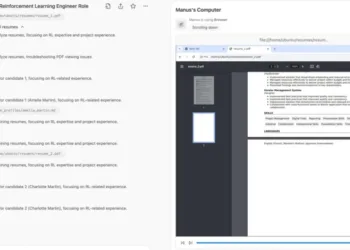If you’re considering upgrading to macOS Sonoma (version 14.0), released on September 26, 2023, there are essential steps to ensure a smooth transition. Here’s how to prepare your Mac for this upgrade and maximize its performance:
1. Check Your Mac’s Compatibility
Before diving into the upgrade, it’s crucial to verify that your Mac meets the minimum requirements. Here’s a quick reference:
- iMac: 2019 or later
- Mac Pro: 2019 or later
- iMac Pro: 2017
- Mac Studio: 2022
- MacBook Air: 2018 or later
- Mac mini: 2018 or later
- MacBook Pro: 2018 or later
You can use the “System Profiler” on your Mac to confirm the model and ensure your current operating system is compatible. Remember, Macs older than 2018 will not be able to run Sonoma.
2. Optimize Your System Before the Upgrade
It’s a common myth that installing an upgrade will automatically speed up your Mac. In reality, if your system isn’t running smoothly before the upgrade, the new OS won’t fix existing issues such as slowness or crashes. Before upgrading, take time to:
- Remove any system optimizers you have installed, as they could hinder performance.
- Disable any antivirus software or utilities since they may interfere with the upgrade process.
If you’re unsure how to remove these tools, check out the helpful guidelines in the Apple Community.
3. Backup Your Data
Backing up your data is critical. Doing so will ensure that you can recover your files in case something goes wrong during the upgrade process.
To create a backup, you can use Time Machine or another backup solution of your choice. Apple provides a detailed guide on how to effectively back up your Mac.
4. Install the Latest Security Updates
Before upgrading, ensure your current operating system is up-to-date to avoid potential issues. To do this:
- Go to the Apple menu and select “System Settings.”
- Click on “Software Update” to check for the latest updates available.
Updating your system can help enhance security and performance before moving to Sonoma.
5. Download and Install macOS Sonoma
Once your Mac is ready, you can download Sonoma from the App Store. Simply search for “macOS Sonoma” and follow the prompts to install it.
As part of the installation process:
- You may be prompted to remove certain applications that aren’t compatible with Sonoma. Make sure to heed these warnings.
- Avoid using your Mac while the upgrade is underway to prevent any interruptions.
6. Monitor Your Applications Post-Upgrade
After upgrading, keep an eye on your applications. You will need to ensure that all your apps are compatible with Sonoma. For compatibility check, you can refer to third-party resources like RoaringApps for a list of apps that support the new OS.
7. Familiarize Yourself with New Features
Sonoma comes with a variety of new features designed to enhance user experience. Spend some time exploring the updates, which include changes to the System Settings interface, improved security features, and enhanced multitasking capabilities.
8. Check Your Printer Compatibility
If you print often, it’s best to ensure your printer supports Sonoma. Manufacturers like Brother, Canon, Epson, and HP have updated their driver support, so check their websites for the latest compatibility information.
Final Thoughts
Upgrading to macOS Sonoma can bring improved performance and features to your Mac, but preparation is key. By following these steps, you’ll set yourself up for a smoother transition and a better experience with your upgraded system. Keep your software updated, maintain good practices, and you’ll enjoy all that Sonoma has to offer!





